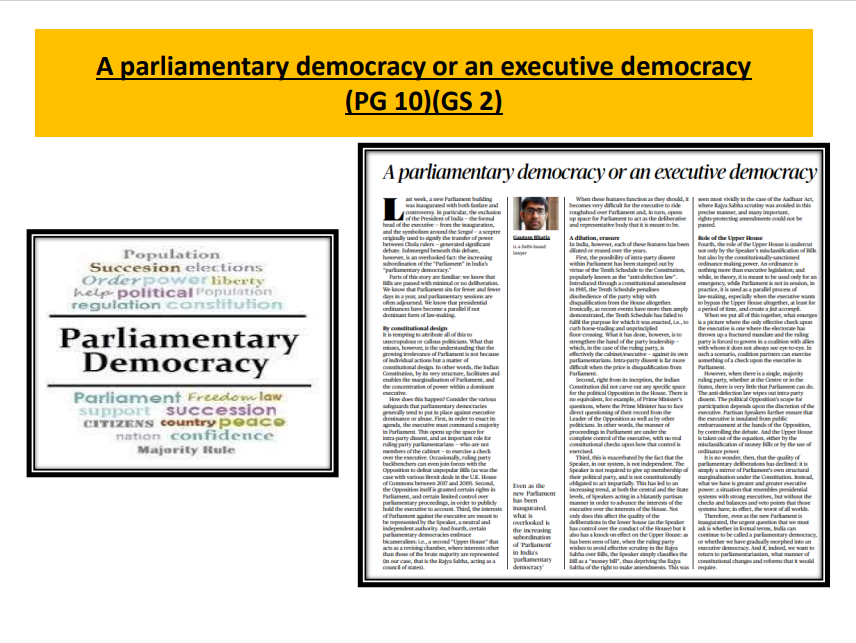
1JUNE 2023
A parliamentary democracy or an executive democracy (PG 10)(GS 2)
1JUNE 2023
Last week, a new Parliament building was inaugurated with both fanfare and controversy. In particular, the exclusion of the President of India — the formal head of the executive — from the inauguration, and the symbolism around the Sengol — a sceptre originally used to signify the transfer of power between Chola rulers — generated signifi•cant debate. • Submerged beneath this debate, however, is an overlooked fact: the increasing subordination of the “Parliament” in India’s “parliamentary democracy.” Parts of this story are familiar: we know that Bills are passed with minimal or no deliberation. • We know that Parliament sits for fewer and fewer days in a year, and parliamentary sessions are often adjourned. • We know that presidential ordinances have become a parallel if not dominant form of law-making
